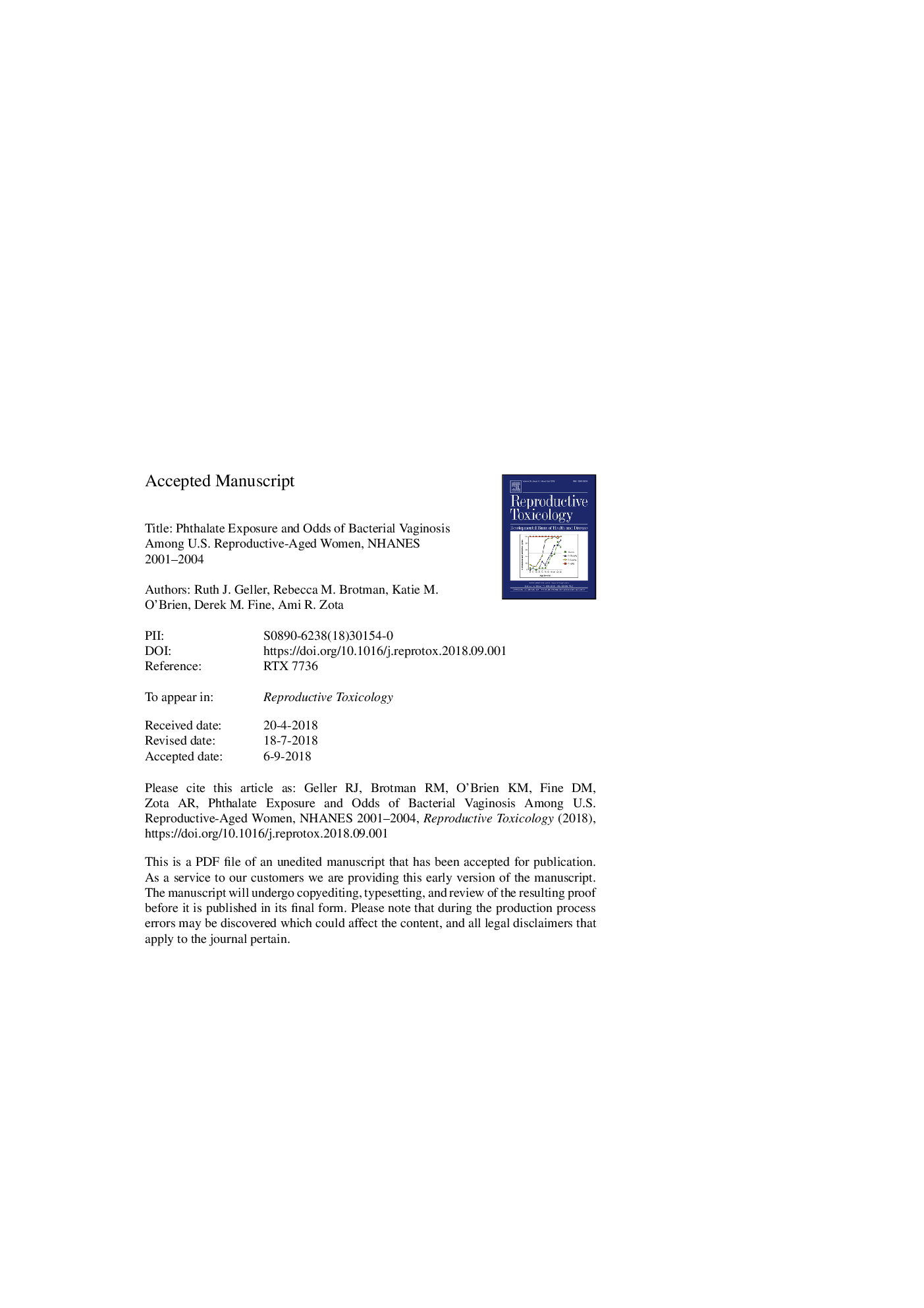| Article ID | Journal | Published Year | Pages | File Type |
|---|---|---|---|---|
| 10158615 | Reproductive Toxicology | 2018 | 39 Pages |
Abstract
Endocrine-disrupting chemicals, such as phthalates, are an unexamined potential risk factor for bacterial vaginosis (BV) and warrant investigation because hormones affect BV. We examined the association between phthalate exposure and BV in the National Health and Nutrition Examination Survey, 2001-2004. BV outcomes were defined as intermediate (Nugent score of 4-6) and positive (7-10). Phthalate metabolites, including monoethyl phthalate (MEP), mono-n-butyl phthalate (MnBP), and di(2-ethylhexyl) phthalate (DEHP) metabolites, were measured in urine. Among 854 women with complete data, multinomial logistic regression revealed that concentrations of MnBP (Q4 vs. Q1 ORâ=â3.01, 95% CI 1.76-5.15, p-trend <0.001) and ΣDEHP metabolites (Q4 ORâ=â2.55, 95% CI 1.45-4.47, p-trendâ=â0.03) were associated with Nugent-score BV, although only MnBP was significant after adjustment for confounders. Associations were null after adjustment for urinary creatinine (MnBP Q4 ORâ=â1.11, 95% CI 0.63-1.96; ΣDEHP Q4 ORâ=â0.72, 95% CI 0.37-1.39). Future work should further examine these relationships using direct measurements of intravaginal phthalates exposures.
Keywords
Related Topics
Life Sciences
Environmental Science
Health, Toxicology and Mutagenesis
Authors
Ruth J. Geller, Rebecca M. Brotman, Katie M. O'Brien, Derek M. Fine, Ami R. Zota,
